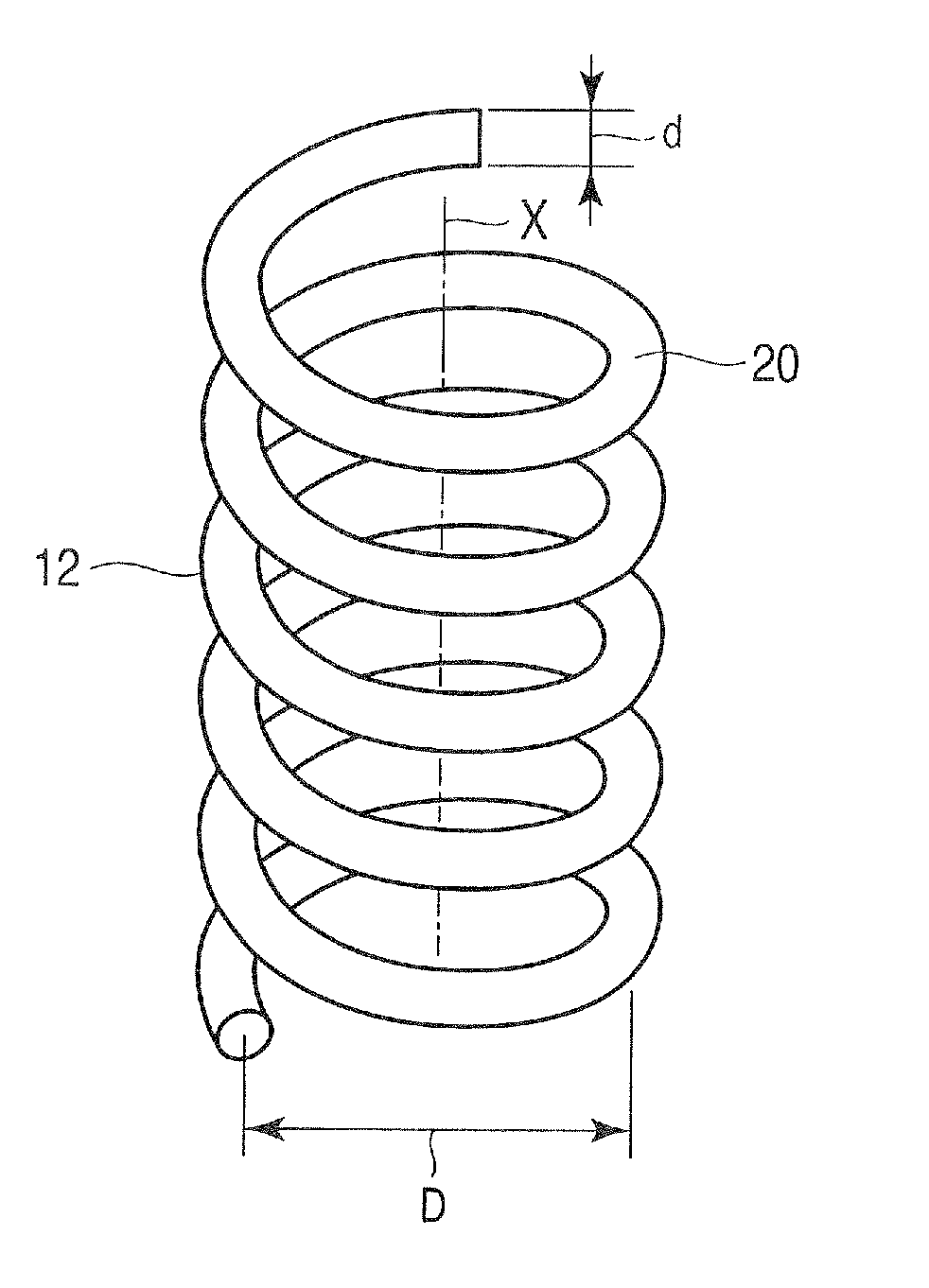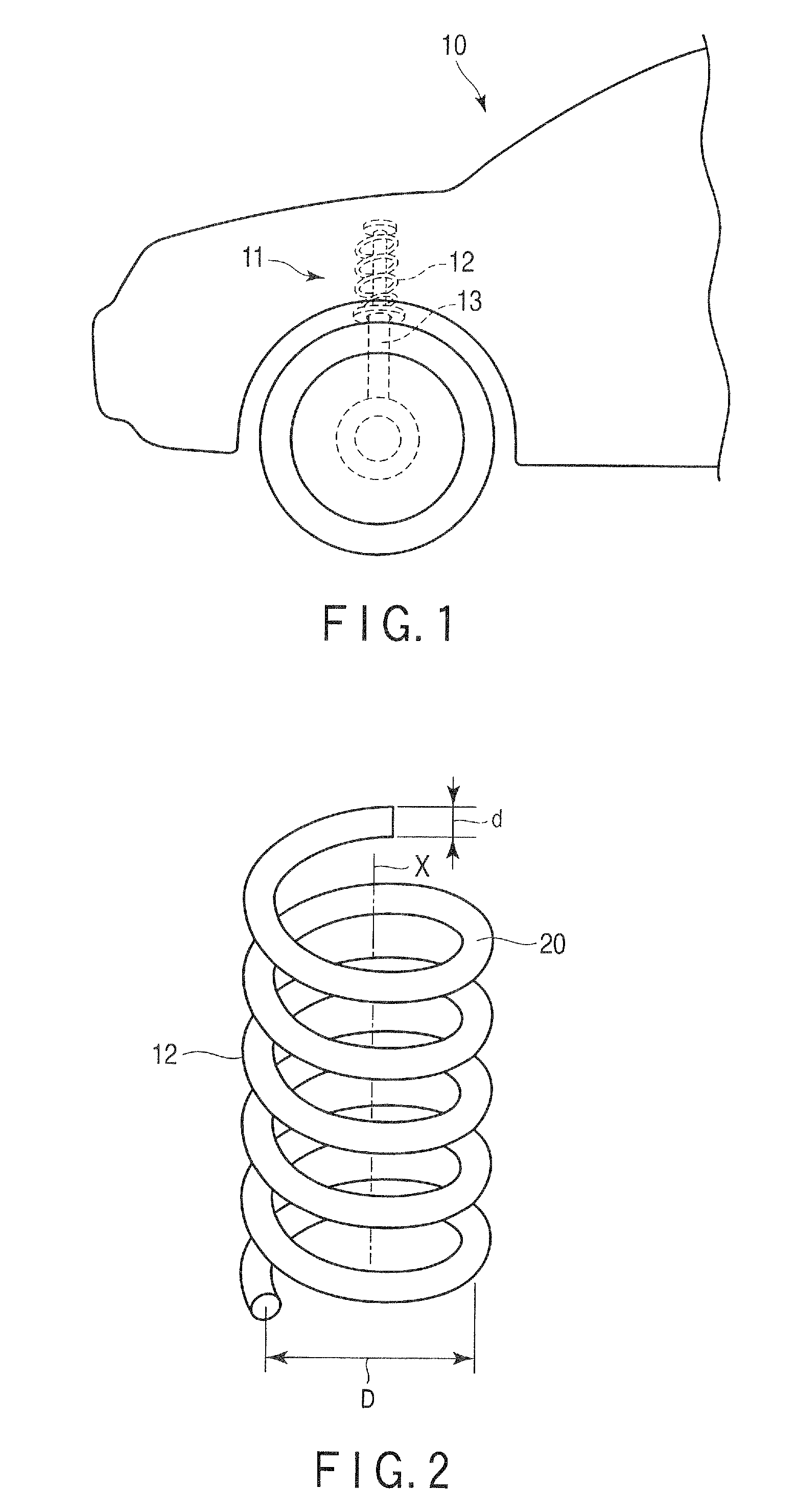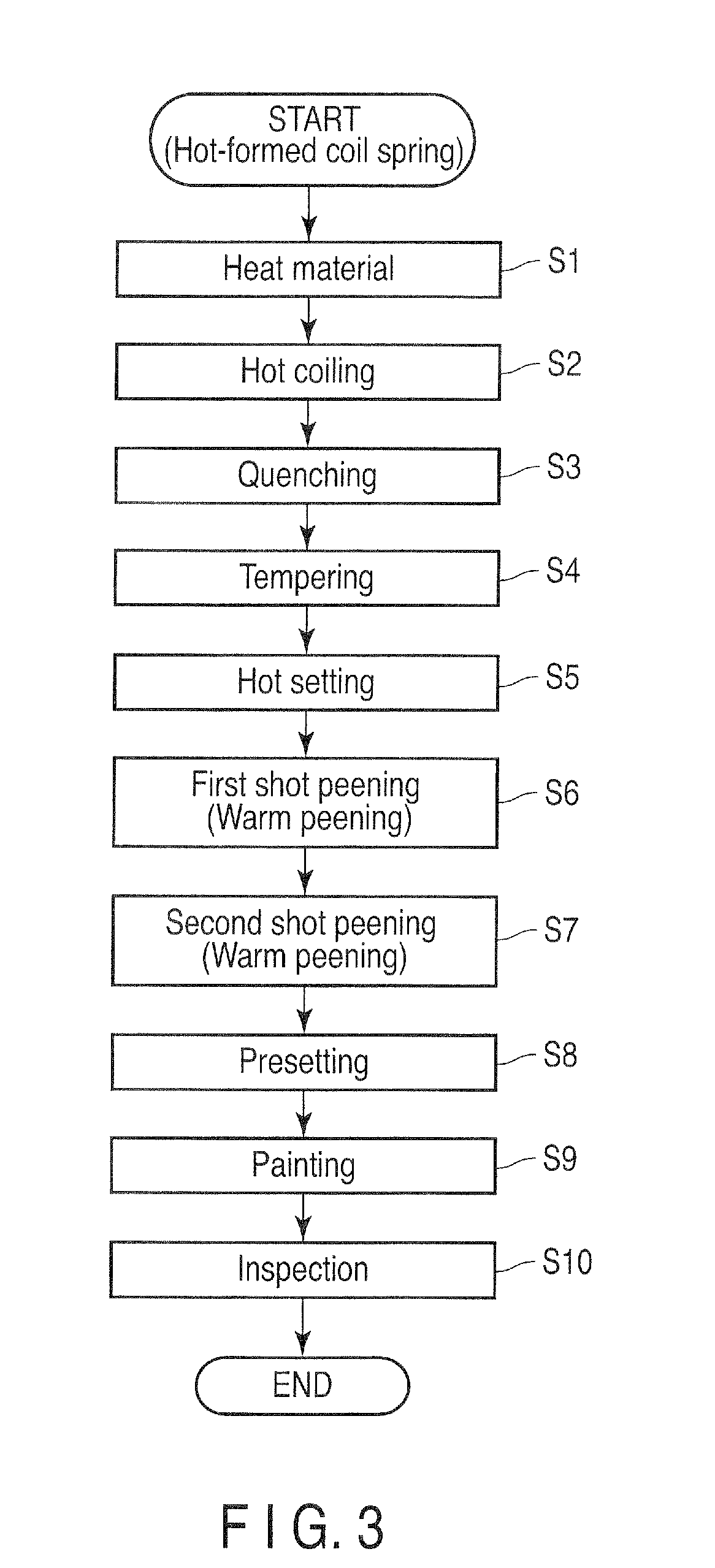Manufacturing method for coil spring
a manufacturing method and coil spring technology, applied in the field of manufacturing methods of coil springs, can solve the problems of increased cost of coil springs, difficult temperature control, and inability to easily apply shots to the inside of coil springs, and achieve the effect of further improving fatigue strength
- Summary
- Abstract
- Description
- Claims
- Application Information
AI Technical Summary
Benefits of technology
Problems solved by technology
Method used
Image
Examples
example 1
[0023]Steel that forms the spring wire 20 is highly corrosion-resistant spring steel (referred to as spring steel S for convenience in this description). The spring steel S is a type of steel enhanced in corrosion resistance, and its chemical composition (mass %) is 0.41 carbon, 1.73 silicon, 0.17 manganese, 0.53 nickel, 1.05 chromium, 0.163 vanadium, 0.056 titanium, 0.21 copper, and iron for the remainder.
[0024]FIG. 3 shows manufacturing processes for a hot-formed coil spring. In a heating process S1, a spring wire for use as a material of the coil spring is heated to the austenitizing temperature (from A3 transformation point to 1,150° C.). The heated spring wire is bent into a spiral in a bending process (coiling process) S2. Thereafter, a heat treatment, including a quenching process S3, tempering process S4, etc., is performed.
[0025]The spring wire is thermally refined by the heat treatment so that its hardness ranges from 50 to 56 HRC. For example, a coil spring with a maximum...
example 2
[0044]The type of steel of a spring wire is SUP7 conforming to Japanese Industrial Standards (JIS). The chemical composition (mass %) of SUP7 is 0.56 to 0.64 carbon, 1.80 to 2.20 silicon, 0.70 to 1.00 manganese, 0.035 or less phosphorus, 0.035 or less sulfur, and iron for the remainder. Manufacturing processes of Example 2 are shared with Example 1 except for the shot peening conditions. The two-stage shot peening (warm double shot peening) based on a first shot peening process and second shot peening process is also performed in Example 2.
[0045]In the first shot peening process in Example 2, a first shot with a shot size of 0.87 mm was caused to impinge on the spring wire at a first projectile speed of 76.7 m / sec (impeller speed of 2,300 rpm). The treatment temperature is 230° C. In the second shot peening process, thereafter, a second shot with a shot size of 0.67 mm was caused to impinge on the spring wire at a second projectile speed of 46 m / sec (impeller speed of 1,380 rpm). Th...
PUM
| Property | Measurement | Unit |
|---|---|---|
| treatment temperatures | aaaaa | aaaaa |
| treatment temperatures | aaaaa | aaaaa |
| temperature | aaaaa | aaaaa |
Abstract
Description
Claims
Application Information
 Login to view more
Login to view more - R&D Engineer
- R&D Manager
- IP Professional
- Industry Leading Data Capabilities
- Powerful AI technology
- Patent DNA Extraction
Browse by: Latest US Patents, China's latest patents, Technical Efficacy Thesaurus, Application Domain, Technology Topic.
© 2024 PatSnap. All rights reserved.Legal|Privacy policy|Modern Slavery Act Transparency Statement|Sitemap



